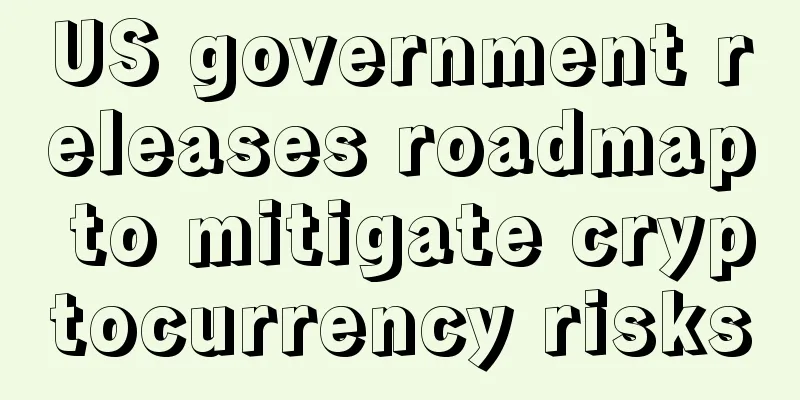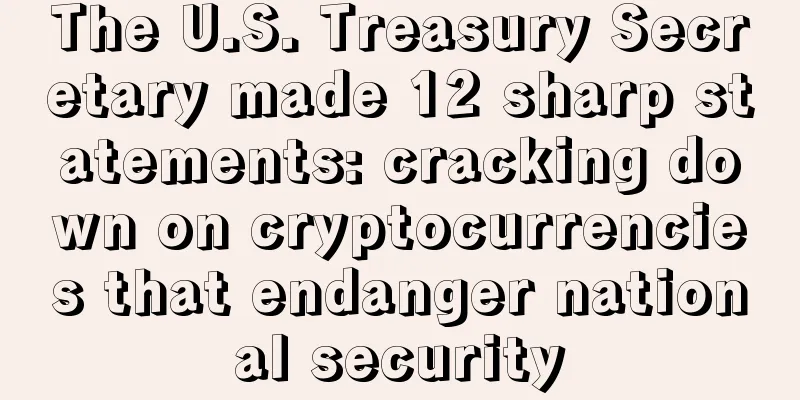US government releases roadmap to mitigate cryptocurrency risks

|
2022 has been a tough year for cryptocurrencies. In May, a so-called “stablecoin” collapsed, setting off a wave of bankruptcies. Just a few months later, a major cryptocurrency exchange collapsed. Many everyday investors who put their trust in crypto companies—including young people and people of color—suffered severe losses, but thankfully, the turmoil in crypto markets has so far had little negative impact on the broader financial system. While cryptocurrencies may be relatively new, the behavior we’ve seen exhibited by some crypto companies and the risks that such behavior poses are not new. As a government, our focus remains on ensuring that cryptocurrencies do not undermine financial stability, protecting investors, and holding bad actors accountable. At President Biden’s direction, we have spent the past year identifying risks in cryptocurrencies and using executive branch authorities to take action to mitigate those risks. First, experts from across the U.S. government developed the first-ever framework for developing digital assets in a safe and responsible manner while addressing the risks they pose. To be sure, the technology that powers cryptocurrencies has the potential to provide faster, cheaper, and more secure ways to pay. But the framework identifies clear risks. For example, some cryptocurrency entities have ignored applicable financial regulations and basic risk controls—all of which are part of protecting our nation’s families, businesses, and economy. In addition, cryptocurrency platforms and promoters often mislead consumers, have conflicts of interest, fail to make adequate disclosures, or commit outright fraud. Poor cybersecurity across the industry has enabled the Democratic People’s Republic of Korea to steal more than $1 billion to fund its existentially threatening missile program. Second, agencies are using their authority to increase enforcement where appropriate and to issue new guidance where needed. Just this month, banking agencies issued a joint statement calling for the separation of risky digital assets from the banking system. Government agencies have launched (or are in the process of launching) public awareness programs to help consumers understand the risks of purchasing cryptocurrencies. We encourage regulators to continue these efforts, including those aimed at addressing and limiting financial institutions’ exposure to digital asset risks. But events over the past year have highlighted that more needs to be done. Agencies have redoubled their efforts to combat fraud, including the proliferation of false or misleading claims about FDIC-insured crypto assets. While the U.S. is already a global leader in combating money laundering and terrorist financing, law enforcement agencies are devoting more resources to combating illegal activity involving digital assets. In the coming months, the U.S. government will also announce priorities for digital asset research and development, which will help the technology that drives cryptocurrency protect consumers by default. Congress also needs to step up its efforts. For example, Congress should expand regulators’ powers to prevent firms from misusing customers’ assets—which can hurt investors and move prices—and mitigate conflicts of interest. Congress could also strengthen transparency and disclosure requirements for cryptocurrency companies so that investors can make more informed decisions about financial and environmental risks. To assist enforcement, Congress could strengthen penalties for violations of illicit financing regulations and prohibit cryptocurrency intermediaries from tipping off criminals. It could provide funding to strengthen enforcement capacity, including with international partners. And it could limit the risks of cryptocurrency to the financial system by following the steps outlined by the Financial Stability Oversight Council in its recent report, including addressing the risks of stablecoins. While congressional action in these areas would be welcome, Congress could also make our jobs harder and exacerbate risks to investors and the financial system. Legislation should not give mainstream institutions, such as pension funds, a green light to dive headfirst into cryptocurrency. Over the past year, limited exposure to cryptocurrencies by traditional financial institutions has prevented volatility in cryptocurrencies from affecting the broader financial system. It would be a mistake for legislation to change course and instead deepen the ties between cryptocurrencies and the broader financial system. The Administration wholeheartedly supports responsible technological innovation that makes financial services cheaper, faster, more secure, and more accessible. However, to realize these benefits, new technologies need corresponding safeguards. Safeguards will ensure that new technologies are safe and beneficial to everyone - ensuring that the new digital economy works for the many, not just the few. To put the right safeguards in place, we will continue to advance the digital asset framework we have developed while working with Congress to achieve these goals. |
<<: Analyst: 85% of the rally was driven by U.S. institutional investors
Recommend
The face of a girl who doesn't want to wear the clothes she just bought
It is very common for girls to like buying clothe...
Filecoin mining: Everything is ready except the mainnet
Filecoin is very popular. Just like stacking hard...
Is it good for a girl to have a mole in the center of her right palm?
I believe everyone knows about moles, but people ...
Late marriage brings happiness
Marriage is a lifelong thing. Choosing a good per...
Bitcoin ransomware decryption tool released
The CoinVault virus was discovered in May 2014 an...
Did US inflation peak in March?
Overnight, the U.S. Department of Labor released ...
The market crashed on 418. Can it get better in the future?
Author | Hashipi Analysis Team...
Those who oppose ASIC mining usually pretend not to see the following facts
1. The monopoly of ASIC mining machines is far lo...
European Parliament proposes putting cryptocurrencies and blockchain technology on the fast track
Europe has been moving very fast in terms of cryp...
The facial features that make Xu Ziqi a lucky woman
The facial features that make Xu Ziqi a lucky wom...
What does a straight love line mean?
Straight love line: A straight and thin love line...
Five Elements Attribute Query Dayi Earth Fate and Which Fate is Compatible
Everyone will meet people who share the same idea...
How to read the love line on the palm
Is it good to have a split love line on your palm...
How to tell fortune by palmistry
Many people know that fortune tellers can calculat...
Is it good to have a fork in the marriage line? What does it mean?
There are many lines on everyone's palm, and ...









